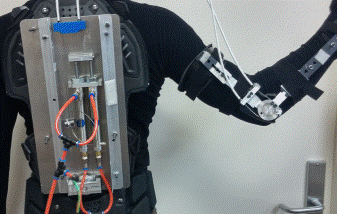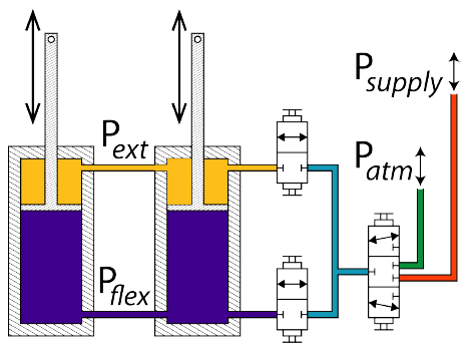Contents:
Individualized Assistive Device for Rehabilitation and Augmentation
Introduction
It is important to develop assistive devices suited to usersf abilities since there are individual differences in terms of muscle strength, and similarly, people with disability have different levels of residual strengths. We focus on design and control of individualized assistive devices for augmentation and rehabilitation, which enable users to increase muscle strength, work space of upper limbs, and other important factors to improve Activities of Daily Life (ADL). A collaborator are researchers from the lab of Professor Ruzena Bajcsy at UC Berkeley working on individualized human modeling. We are currently interested in 1) development of assistive devices with actuators except for electrical geared motors, and 2) control methods based on userfs motion intention estimated from EMG and other human modeling parameters.

Overview of Active/Passive EXoskeleton (APEX)

Schematic of an Active/Passive actuator. Please check details in publication 1
Publications
- Robert P. Matthew et al., Introduction and initial exploration of an Active/Passive Exoskeleton framework for portable assistance, in 2015 IEEE/RSJ International Conference on Intelligent Robots and Systems (IROS).
- Robert P. Matthew et al., Initial investigation into the effect of an Active/Passive exoskeleton on hammer curl performance in healthy subjects, in 2015 Annual International Conference of the IEEE Engineering in Medicine and Biology Society (EMBC)
- Daisuke Kaneishi et al., Initial Exploration for sEMG-based Classification Method of
Loaded and Unloaded Condition for the Control of Assistive Devices, in 2016 Annual International Conference of the IEEE Engineering in Medicine and Biology Society (EMBC)
Researchers


